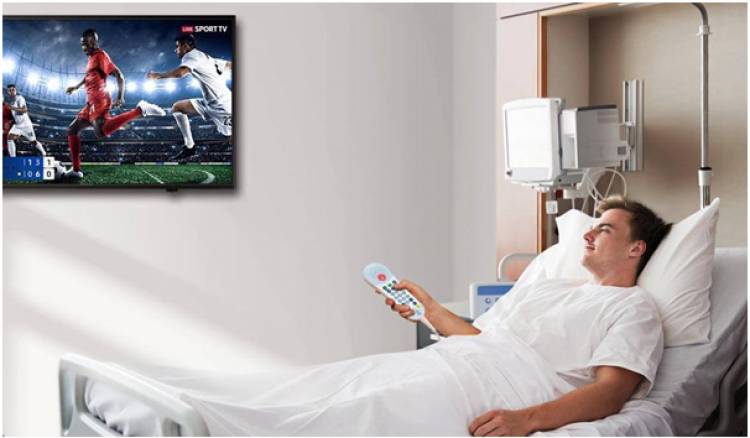
How Streaming TV Enhances Patient Satisfaction
Streaming TV is how most people watch video and audio content today. It eliminates the need for users to wait for a download or DVR to record or for something to come on the air.
Smart healthcare-grade TVs allow patients to access movies, the internet, and games from a single portal. In addition, these TVs can be equipped with a pillow speaker and broadcast hospital events like chapel services and special presentations.
Improved Patient Engagement
A day in the hospital can be long and boring, especially without distractions like TV. Patients who feel disconnected from the outside world are more likely to become frustrated and hit their nurse call button, taking up valuable time for nurses who can better handle more pressing matters. Providers can create personalized content for each individual using a hospital patient TV system. For example, patients can view educational videos about their treatments or medications. This helps educate patients, reduce confusion, and enhance satisfaction. It also eliminates the need for reams of paper handouts that can be misplaced or lost.
The best patient entertainment systems include a full range of programming, from live channels to on-demand shows and movies. These options are also available with LoopTV, allowing patients to unwind with a favorite show, play a video game, or listen to soothing music. These entertainment innovations keep patients occupied and happy throughout their stay and can help with pain management.
A hospital patient TV system also allows patients to communicate with their medical team via a secure message board. They can access their daily schedule, view photos of their medical team, and get answers to any questions. This can reduce their time to press their nurse call button and ultimately increase HCAHPS scores by making patients more satisfied with their overall experience.
Enhanced Patient Education
Patients can use IPTV systems to learn about their healthcare options and how they should best manage their condition at home. Using video on demand, hospitals can deliver the right information to patients at just the right time. This information can be delivered in the format that best suits the patient, such as videos or podcasts. ML algorithms can also analyze user behavior to identify patterns and provide more personalized content. This helps improve the efficiency of the system and the delivery experience, increasing satisfaction.
Medical students perceive reality television as a highly relatable medium to contextualize clinical practice, a finding supported by previous studies. The high level of emotion associated with the program may be responsible for the increased subjective memorability of the learning material. A hospital's IPTV system can help patients understand their health conditions through various educational programs and resources, such as symptom checkers and disease management videos. Adding local channels and news programs can further enhance patient engagement. Regional programming can encourage patient satisfaction by showing that the hospital is responsive to their needs. Hospitals can also use their IPTV systems to collect real-time patient feedback, an essential part of the HCAHPS survey that determines a patient's likelihood to recommend the hospital to family and friends. Samsung's smart healthcare-grade TVs can be equipped with a survey function that prompts patients to answer questions on their treatment, care, and hospital stay via their TV screen.
Increased Patient Satisfaction
One of the most powerful ways to improve patient satisfaction is by enhancing their in-room experience. This can be accomplished by adding a wide range of entertainment options tailored to specific demographics cultural and religious beliefs, and providing educational content. Hospitals can also utilize healthcare TVs to collect real-time patient feedback via a survey feature that prompts them to rate their stay, increasing HCAHPS scores and higher reimbursements. Taking the time to make patients feel comfortable and at home may seem simple, but it significantly impacts overall patient outcomes and satisfaction.
Reduced Paperwork
Hospitals and healthcare organizations can offer their patients the same level of connectivity that they enjoy at home by leveraging streaming TV. This provides a more reliable, advanced, and cost-effective solution than traditional coax cable offerings. Streaming TV allows patients and guests to access On-Demand content on their devices, schedules, and terms. Streaming services require no coax wiring or rewiring, eliminating the costs associated with aging hardware. Streaming service providers can provide additional capabilities like videoconferencing and digital signage without a dedicated head-end or transcoding equipment. This saves on technology and maintenance costs and frees up the hospital's stretched IT staff for other projects.
When a patient's day in the hospital feels long and boring, they often reach for the TV remote to find entertainment and distraction. However, if their TV experience could be better or more frustrating, they might rate the facility poorly in their Hospital Consumer Assessment of Healthcare Providers and Systems (HCAHPS) survey. This can damage the hospital's reputation and negatively impact reimbursement rates, so improving in-room televisions is a critical way to boost satisfaction levels. Healthcare-grade TVs deliver the high-definition QLED viewing experience that patients are accustomed to at home, allowing them to stream their content from their mobile devices. They also eliminate the need for reams of paper handouts by digitally displaying welcome videos, channel guides, and food menus.












